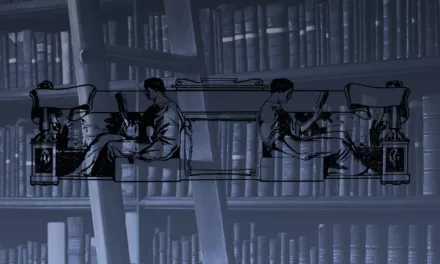
How do you build and maintain tension?

“Anyone have any advice on how to build and maintain tension? I just read through an old story, and my tension is… nonexistent at best”
We’ve all experienced that all-encompassing focus that comes from being sucked into a really great book. One that keeps you at the edge of your seat, turning the pages, desperate to know what comes next. That’s the power of tension.
Tension keeps your story tightly paced and plotted. It keeps your readers engaged and makes them desperate to read just one more chapter.
Think of tension as your story’s pulse. Sometimes it races, sometimes it stays steady, but it’s always there in the background, keeping the story alive. Without tension, even the most beautiful writing falls flat. It’s the difference between a story that people admire on its technical merits and one they can’t put down.
Essential elements to build tension
Have stakes that matter
The foundation of tension is having something meaningful at risk. Your characters must face consequences that deeply affect them or others they care about. These stakes can be physical (life or death), emotional (love or heartbreak), or psychological (sanity or madness). The key is making readers understand and feel why these consequences matter to your characters.
Without meaningful stakes, any conflict feels hollow and artificial. Even small stakes can create powerful tension if they’re personally significant to the character.
Have time pressure
Nothing builds tension like a ticking clock. Deadlines, whether literal or metaphorical, force characters to act and make decisions under pressure.
A time limit transforms every choice into a crucial moment, every delay into a potential disaster. Whether it’s defusing a bomb, reaching a loved one before they leave forever, or meeting a critical deadline, time constraints amplify existing stakes and create a sense of urgency that pulls readers through the story.
Escalating conflict
Tension grows when problems compound. Start with a manageable challenge, then gradually increase the difficulty and consequences.
Each new obstacle should build upon previous ones, creating a snowball effect that makes the situation increasingly complex. When characters solve one problem, introduce a bigger one. This layering of complications prevents the tension from plateauing and keeps readers invested in how your characters will overcome mounting adversity.
Practical techniques for building tension
In prose
- Use shorter sentences and paragraphs during tense moments. Snappier sentences make for snappier reads.
- Create white space on the page. You can achieve this with more dialogue, shorter paragraphs, and less expository description. White space means faster reading, giving the experience of reading certain sections more weight.
- Immerse readers with sensory detail, but don’t go overboard. Be intentional and precise.
- Balance action with reaction. Too much action is fatiguing, so you need to balance pacing with tension.
- Use dialogue to reveal mounting pressure from the character’s own points of view.
In character development
- Give characters conflicting goals. Conflict is the backbone of all good fiction, so you can’t build tension without it.
- Create internal conflicts that war with external needs. What a character wants and what they need are not always aligned, which can be a great source of tension.
- Develop relationships with built-in tension. These don’t have to be romantic. They could be professional disagreements, families that don’t get along, or friends who don’t always see eye to eye.
- Write flawed characters that can complicate potential resolutions. Characters create their own tension, because like people, they’re not perfect.
In plot
- Foreshadow and cast seeds of conflict early in the narrative.
- Create multiple plot threads that intersect. A great source of tension for a reader can be waiting to see how multiple subplots will come together with the main plotline.
- Build anticipation with subtext that works toward your story’s themes in subtle ways.
- Drip feed information or build it into your story world seamlessly, rather than relying overly on exposition or info-dumping.
Common Pitfalls to Avoid
- Don’t resolve conflict too quickly or easily.
- Don’t provide too much exposition at once.
- Don’t let characters get too comfortable. Be sure to throw some trials their way.
- Don’t make the stakes too low or unclear.
- Don’t be too obvious in signposting potential story outcomes. Let readers come there naturally.
- Don’t rely on artificial tension by withholding important information.
- Don’t resolve major tensions with deus ex machina solutions (unless plot relevant, of course).
Practical exercises for writing tension
- Rewrite a scene three times, each with increasing stakes. See which version you think is the most engaging to find the perfect bland of tension and pacing that works for your style.
- Practice writing dialogue where characters want opposing things. Write two versions. One, in which they come to an agreement, and another in which they remain in opposition.
- Map your story’s tension on a graph to identify flat spots. Is there too much tension leading to flat pacing? Or do you need more? Where do you think you can cut down or build up the tension?
Building and maintaining tension, like any writing skill, is one that improves with practice. Remember that tension doesn’t mean constant high drama. It’s about creating and sustaining reader investment in your story and its outcome.
The key is to make tension serve your story rather than overshadow it. When done well, tension becomes the invisible force that pulls readers through your narrative, making them care deeply about your characters and their journey.
































